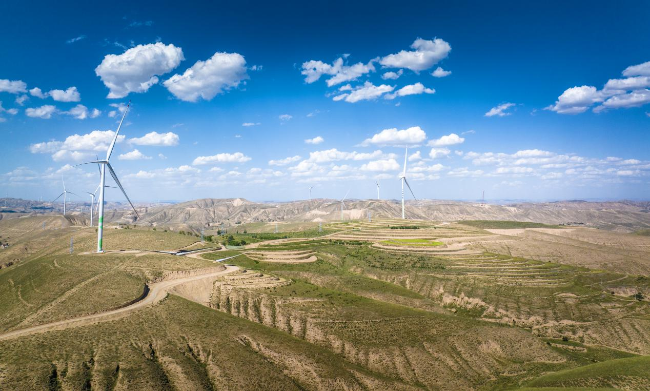



Gansu's installed power capacity surpasses 90 million kW, with new energy accounting for over 60 percent. [Photo provided to gogansu.com]
As of the end of April, Gansu's power generation capacity reached 90.56 million kW, marking a 29 percent year-on-year growth. Notably, the installed capacity of new energy sources reached 55.83 million kW, a 48.69 percent increase, equivalent to 61.65 percent of the total. Compared to the end of the 13th Five-Year Plan, Gansu's new energy installed capacity has increased by 32.14 million kW.
In 2023, Gansu added a record-breaking 16.65 million kW of new energy grid-connected capacity. The new energy generation reached nearly 70 billion kWh, a year-on-year increase of almost 30 percent, which is like saving over 8.54 million tons of standard coal. As of April 30, 2024, Gansu's new energy generation was 25.2 billion kWh, reflecting a 21.94 percent year-on-year growth.
State Grid Gansu Electric Power actively promotes the transmission of new energy out of the province. In 2023, the number of recipient provinces reached 25, with a cumulative outbound electricity transmission of 52.2 billion kWh, of which 25.3 billion kWh were from new energy sources, ranking second nationwide in terms of transmission scale. Currently, the country’s first integrated wind, solar, thermal, and storage energy project, the Gansu Electric Power to Shandong Project, is under rapid construction. Additionally, projects such as Gansu Electric Power to Zhejiang and Gansu Electric Power to Sichuan are progressing steadily.
Gansu is rich in wind and solar resources. In recent years, State Grid Gansu Electric Power has focused on six key elements: power sources, power grids, customers, energy storage, markets, and mechanisms, actively exploring sustainable development pathways for new energy. The company has fully utilized market resources to specifically address bottlenecks in new energy consumption, establishing a market trading mechanism that integrates medium- and long-term transactions with daily rolling transactions. This approach further meets the flexible adjustment demands of new energy enterprises regarding medium- and long-term contracts.